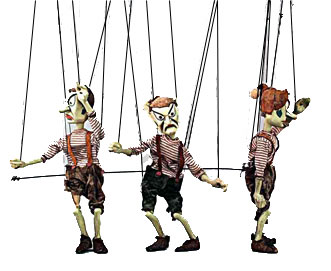

Although he walks with an awkward gait that I think is as much a symptom of the puppetry as the illness, he is otherwise utterly convincing. Ted is a large, pillowy white puppet, about five feet tall and operated by one to three puppeteers.
#Puppetry museum to mcdonalds series
Through a series of often poignant and amusing flashbacks, it charts the slow deterioration of Ted, who can no longer speak or move but has a vivid collection of memories to draw upon in his darkest moments. B.265-2000.This review was written for Animations OnlineĪ collaboration between two small theatre companies – Little Cauliflower and Smoking Apples – ‘CELL’ uses puppetry, light, shadow and very few words to explore the implications of being diagnosed with motor neurone disease (MND). © Victoria and Albert Museum, London Parker puppet, Christine Glanville, about 1965, UK. © Victoria and Albert Museum, London Andy Pandy puppet, Pelham Puppets Ltd, 1970 – 79, UK. © Victoria and Albert Museum, London Muffin junior puppet, Moko, about 1950. Left to right: Sooty and Sweep puppets, unknown, 20th century, museum nos. Spitting Image puppets, created for television in the 1980s by Peter Fluck and Roger Law, renewed the 18th-century tradition of satirical puppetry at a time when many innovative British touring puppet companies were established, and theatre companies such as Forkbeard Fantasy began using large scale puppetry in their work. Jim Henson created many different types of puppets for the series Sesame Street and The Muppets which British audiences adored. British children's television from the 1950s to the 70s made stars of several puppets, from the marionettes 'Muffin the Mule', 'Andy Pandy', 'Bill and Ben', 'Lady Penelope', 'Parker', 'Troy Tempest' and 'Captain Scarlet' to the glove puppets 'Sooty and Sweep' and 'Basil Brush' as well as the American sock puppet 'Lamb Chop' (who was still operated by hand).
#Puppetry museum to mcdonalds full
While puppeteers provided entertainment for Working Men's Clubs and night clubs in the late 1940s, (with performers operating for the first time in full view of the audience), it was TV that brought brought puppets to a much wider public. Print depicting the Commedia dell'Arte character Pulliciniello (Pulcinella), by Cornelis Danckerts ll after Jacques Callot, about 1622, Europe. In England he was called Punchinello and eventually shortened to 'Punch'. They brought a string puppet character based on the Italian Commedia dell'arte figure Pulchinella. When Charles II returned to England following the end of the Second English Civil War, entertainers from Europe came too, including puppeteers. Puppet plays, however, were still tolerated, so from 1642 until the restoration of the monarchy in 1660, puppet theatre flourished – mostly with glove puppets, though shadow puppets were also known. Theatres were closed during the mid- 17th century during a period of religious and political upheaval In England, when stage plays were forbidden. Puppeteers also performed versions of popular stage plays, historical stories and contemporary events and figures such as Guy Fawkes and the Gunpowder Plot.


 0 kommentar(er)
0 kommentar(er)
